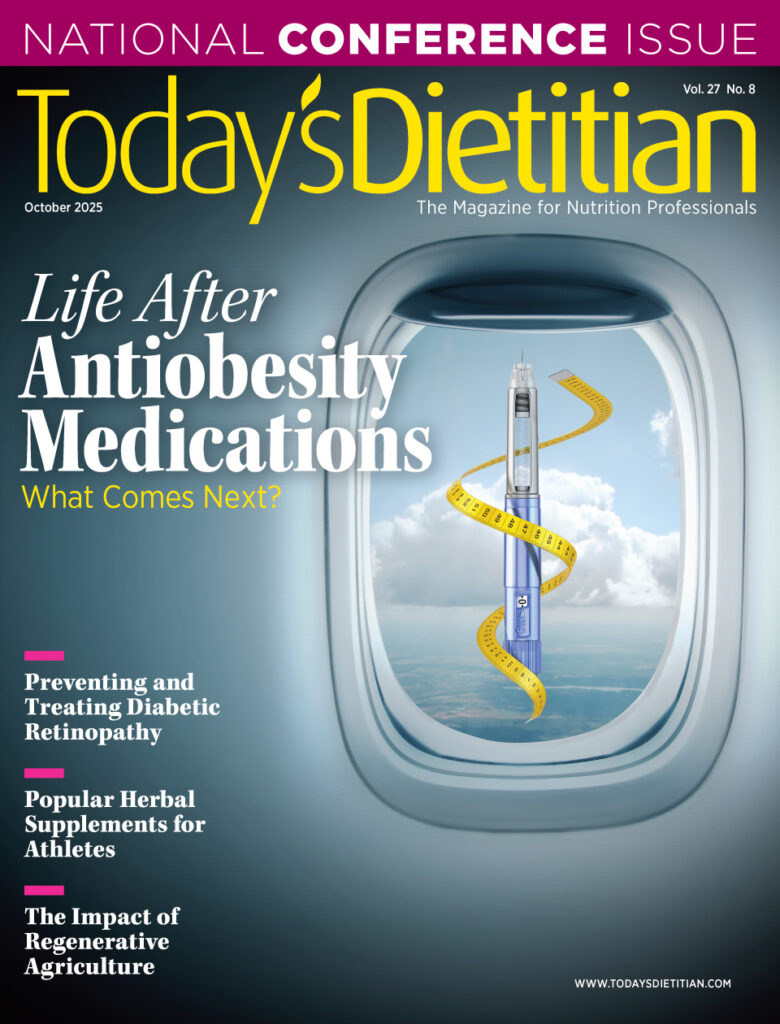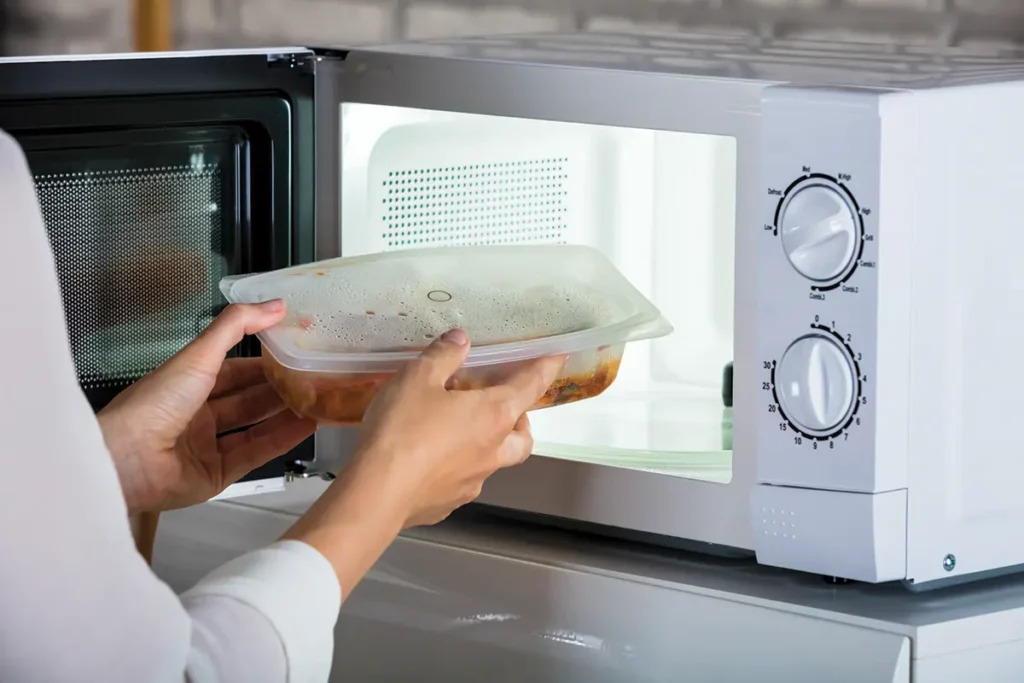Today’s Dietitian
Vol. 25 No. 6 P. 6
Q: My clients have concerns about microwaving food and beverages in plastic containers. Is it safe?
A: Microwaves are a convenient and quick way to cook and reheat food. They’re also a method people use to clean their plastic containers. Understanding the issues surrounding plastic and the recommendations for microwaving plastic can help dietetics professionals provide sound advice to clients who have questions.
Chemicals and Potential Health Effects
One concern with plastic is that it contains bisphenol A (BPA), a chemical produced in large quantities for use in the production of polycarbonate plastics.1 The main source of exposure to BPA is through an individual’s diet. Air, water, and dust also can be sources of exposure, but BPA in food and beverages are where people are mainly exposed. What’s more, food storage containers can be made with BPA and phthalates, and depending on the temperature used to heat the food and the age of the container, BPA potentially can leach into the food stored within these containers.
The 2003–2004 National Health and Nutrition Examination Survey found detectable levels of BPA in 93% of the 2,517 urine samples tested in people aged 6 and older. In addition, some animal studies report effects in fetuses and newborns exposed to BPA.1 Another concern about microwaving plastics is phthalates, which are a group of chemicals that make plastic containers more durable. The CDC scientists measured 13 phthalate metabolites in the urine of at least 2,636 people aged 6 and older—suggesting that it can be just as prevalent as BPA.2
A 2021 study discusses the impact of phthalate on human health and found that, although phthalate has a short half-life in tissues, chronic exposure can influence the endocrine system and the functioning of multiple organs. Both BPA and phthalate are endocrine disruptors, as they can affect estrogen and testosterone levels in humans. They also can impact the brain and reproductive organs in developing fetuses. As such, they potentially can have long-term negative consequences on pregnancy, child growth and development, and reproductive systems in children and adolescents.3 It should be noted that phthalates and BPA are found in various food packaging and beauty products and in the environment, and these studies examine the overall effects of these collective sources.
Plastic Wrap and Cold Storage Containers
Plastic containers used in the microwave aren’t the only concern. Some individuals use plastic wrap, which shouldn’t touch food because the condensation under the plastic wrap may contain phthalates and get into the food.4 In addition, the USDA Food Safety and Inspection Service says that cold storage containers such as margarine tubs and cottage cheese and yogurt containers aren’t approved for use in the microwave as the chemicals can migrate into food during cooking.
Recommendations for RDs
Dietitians should be able to discuss the health consequences associated with long-term exposure to BPA and phthalates with clients. Polycarbonate plastic food containers shouldn’t be microwaved. Although these containers are strong and durable, over time, they may break down from overuse at high temperatures.
Dietetics professionals should advise clients to check the recycling codes on the bottom of containers. Plastics marked with recycling codes 3 or 7 may be made with BPA. The USDA Food Safety and Inspection Service says that the following containers or wraps can be microwaved safely: heatproof glass (eg, Pyrex, Anchor Hocking), glass-ceramic (eg, Corning Ware), oven cooking bags, baskets (straw and wood) for quick warming of rolls or bread, wax paper, parchment paper, heat-susceptor packaging, and heavy plastic wrap as long as the plastic doesn’t touch the food. Moreover, clients can microwave any cookware specifically manufactured and labeled for use in the microwave oven, even plastics.4
— Toby Amidor, MS, RD, CDN, FAND, is founder of Toby Amidor Nutrition (tobyamidornutrition.com) and a Wall Street Journal bestselling author. She’s written 10 cookbooks, including the upcoming Up Your Veggies: Flexitarian Recipes for the Entire Family (October 2023) and The Family Immunity Cookbook: 101 Easy Recipes to Boost Health. She’s also a nutrition expert for FoodNetwork.com and a contributor to U.S. News Eat + Run and other national outlets.
Send your questions to Ask the Expert at TDeditor@gvpub.com or send a tweet to @tobyamidor.
References
1. Bisphenol A (BPA). National Institute of Environmental Health Sciences website. https://www.niehs.nih.gov/health/topics/agents/sya-bpa/index.cfm. Updated January 17, 2023.
2. Phthalates factsheet. Centers for Disease Control and Prevention website. https://www.cdc.gov/biomonitoring/Phthalates_FactSheet.html#:~:text=Phthalates%20are%20a%20group%20of,%2C%20shampoos%2C%20haih%20sprays. Updated April 5, 2021.
3. Wang Y, Qian H. Phthalates and their impacts on human health. Healthcare (Basel). 2021;9(5):603.
4. Cooking with microwave ovens. USDA Food Safety and Inspection Service website. https://www.fsis.usda.gov/food-safety/safe-food-handling-and-preparation/food-safety-basics/cooking-microwave-ovens#11. Updated August 8, 2013.



